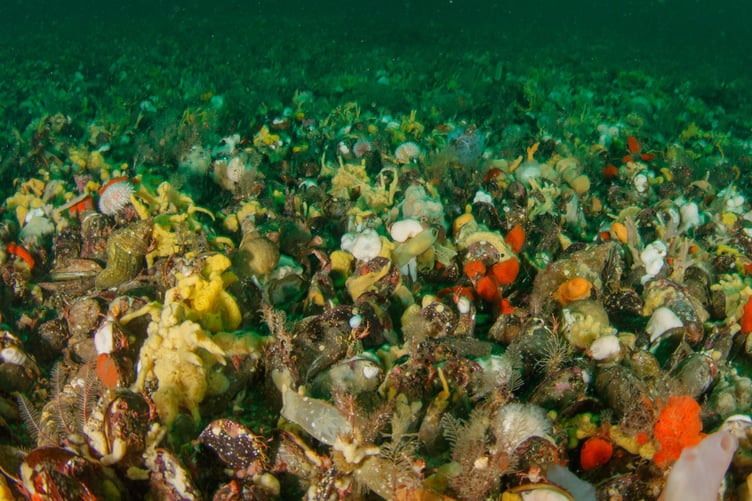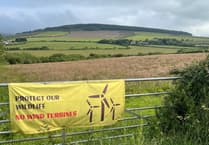As an island community we depend on the sea for so much - but it is also easy to take it for granted. In a monthly column, Dr Lara Howe, marine officer with the Manx Wildlife Trust, and Dr Peter Duncan, senior marine environment officer at DEFA, explore this underwater world and the lives of some of those who work there.
Following on from the last article about eelgrass, another important habitat-forming species in Manx waters is the horse mussel, Modiolus modiolus, found at depths of up to 50m.
These reefs which were once widespread are now globally scare and have suffered marked declines as a result of mobile fishing gear.
As a consequence of this they are protected through international law, via the Convention for the Protection of the Marine Environment of the North-East Atlantic (OSPAR) as a priority species.
Larger than the edible or blue mussel seen growing on the rocky shore, they can grow up to 22cm, are dark brown or black in colour and can live for up to 50 years.
They are found in areas with high tidal movement which provides a continuous supply of plankton for them to feed on.
Horse mussels can live singly, in small clumps or form huge biogenic reefs, made up of both dead and alive individuals, and providing a habitat for a diverse range of other organisms including commercially important species, such as whelks and queen scallops.
In fact, one of our mussel reefs, Little Ness, off Marine Drive is the most biologically diverse of a series of such reefs sampled across the UK and Norway, with a total species count of 147 taken from a one metre sample.
Check out the video of Little Ness horse mussel reef on the Biosphere channel: https://www.youtube.com/watch?v=hZP01p6px_s
We actually have several horse mussel areas around our coast including a specific ‘horse mussel zone’ within Ramsey Bay Marine Nature Reserve (orange box in the Ramsey Bay MNR map), and which protects a high-quality reef area.
There are also some mussel patches within the fisheries management zone in Ramsey Bay, however, these mussels are not reef forming, but can be found in high densities and buried in the seabed (known as ‘in-faunal’).
Manx fishermen are careful to avoid these areas during the annual fishery in the FMZ.
The mussel reef at Little Ness we have mentioned above, but there is also an in-faunal population off Port Grenaugh that has been identified recently through some survey work and a historical area, known as ‘Jones’ teardrop’, off the south-east coast, due to its shape.
The ‘teardrop’ area hasn’t been surveyed since the 1950s and is likely to be patchy due to fishing effort in the area, as dredging can destabilise the reefs.
The reefs are held together by sticky protein, byssus threads, think guy ropes on a tent, that anchors everything down.
The slow-developing structure creates lots of nooks and crannies for species to hide in and escape predation, including brittlestars, worms, snails and crabs.
The shells of the mussels also provide a great surface for other species, such as sponges, tube worms and soft corals, to grow on.
See how many different species you can spot in this image of Little Ness horse mussel reef (above).
Besides providing a complex habitat that is an important nursery and feeding ground, horse mussels also provide other ecosystem services such as water filtration and indirectly supporting our commercial fisheries. They also cycle dissolved marine carbon dioxide, via construction of their calcium carbonate shells and respiration, but also within the sediments accumulated below the reef.
Although the full extent of their role in carbon capture is not clear, and a subject of current research.
Manx legend refers to the Énbarr, or Aonbharr of Manannán, the horse of the sea god Manannán mac lir – that could travel equally well on land or by sea.
Perhaps, over time Énbarr became our present day horse mussels, waiting patiently on the seabed for the return of Manannán himself?





Comments
This article has no comments yet. Be the first to leave a comment.